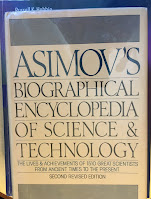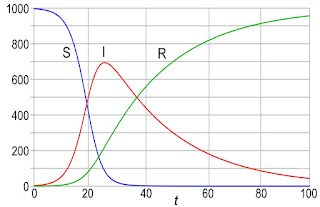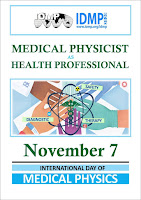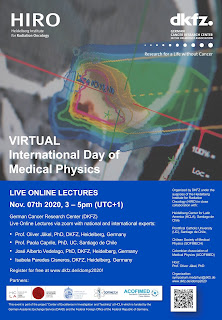 |
| “Defibrillation Mechanisms: The Parable of the Blind Men and the Elephant,” by Ideker, Chattipakorn, and Gray. |
The purpose of the article was to review the different hypotheses that explain defibrillation of the heart. Russ Hobbie and I discuss defibrillation in Chapter 7 of Intermediate Physics for Medicine and Biology.
Ventricular fibrillation occurs when the ventricles contain many interacting reentrant wavefronts that propagate chaotically… During fibrillation the ventricles no longer contract properly, blood is no longer pumped through the body, and the patient dies in a few minutes. Implantable defibrillators are similar to pacemakers, but are slightly larger. An implanted defibrillator continually measures the [electrocardiogram]. When a signal indicating fibrillation is sensed, it delivers a much stronger shock that can eliminate the reentrant wavefronts and restore normal heart rhythm.Ideker et al. discuss several possible mechanisms that explain how an electrical shock terminates fibrillation. This is a difficult problem, and I’ve spent much of my career trying to figure it out (I guess I’m one of the blind men).
It is possible that most of the electrical and optical mapping studies and the associated hypotheses about the mechanism of interaction of electrical stimuli with myocardium are all valid. It may be that shocks of low strength do not halt the activation fronts of fibrillation; and shocks of higher strength, depending on the circumstances, cause polarization critical points, field-recovery critical points, and/or action potential prolongation; whereas still stronger shocks slightly below the defibrillation threshold cause activation that appears focal on the epicardium either by intramural reentry, by reentry involving the Purkinje fibers, or by true focal activity, perhaps caused by delayed or early afterdepolarization… If so, then just as in the parable of the blind men and elephant, most of the reported studies and proposed defibrillation mechanisms all may be partially correct, yet all may be partially wrong because they are incomplete.Defibrillation is a fine example of how a knowledge of physics can help solve a critical problem in medicine. Apparently a knowledge of poetry helps too.








